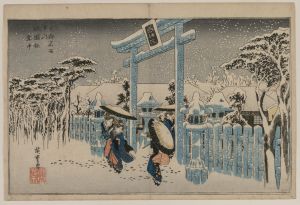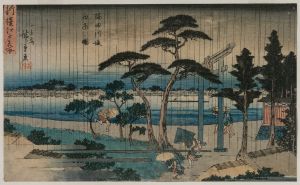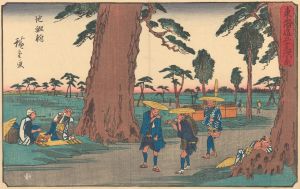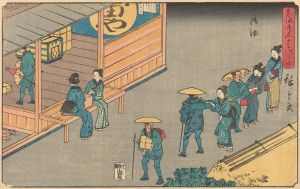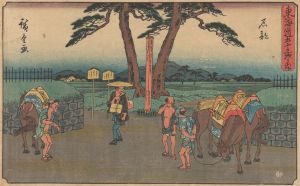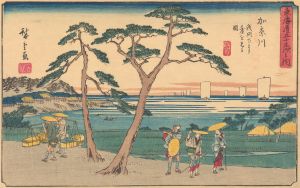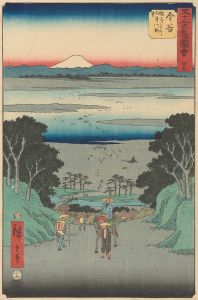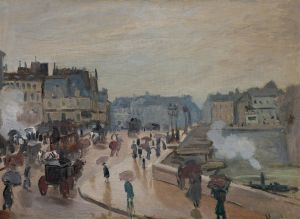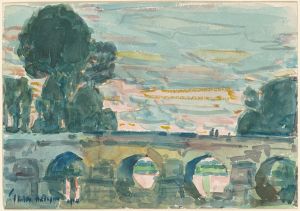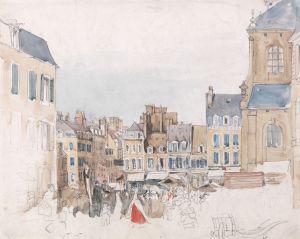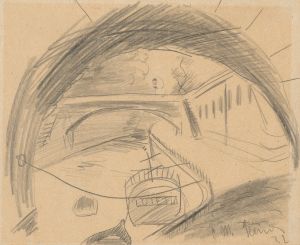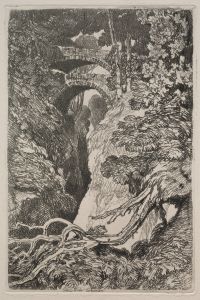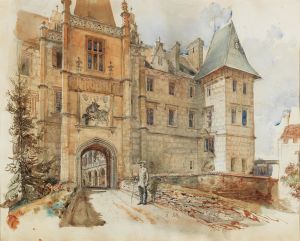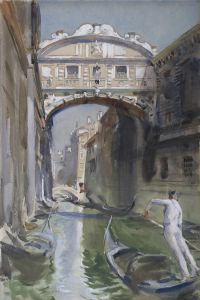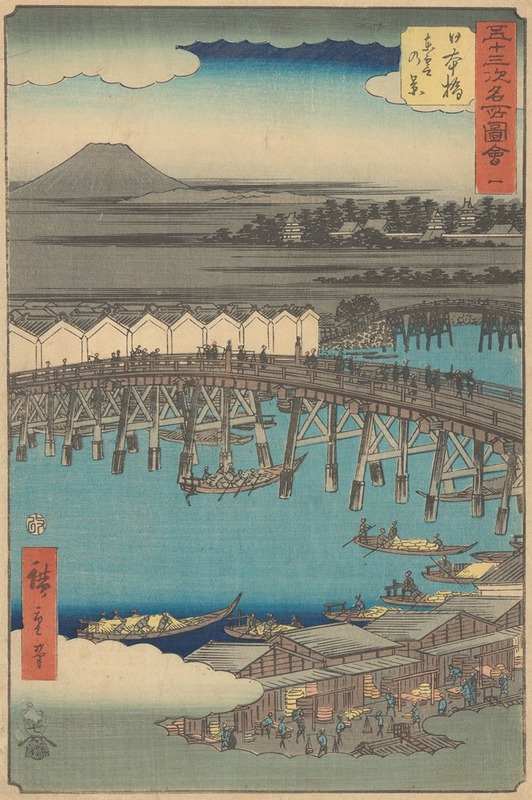
Nihonbashi
A hand-painted replica of Andō Hiroshige’s masterpiece Nihonbashi, meticulously crafted by professional artists to capture the true essence of the original. Each piece is created with museum-quality canvas and rare mineral pigments, carefully painted by experienced artists with delicate brushstrokes and rich, layered colors to perfectly recreate the texture of the original artwork. Unlike machine-printed reproductions, this hand-painted version brings the painting to life, infused with the artist’s emotions and skill in every stroke. Whether for personal collection or home decoration, it instantly elevates the artistic atmosphere of any space.
Andō Hiroshige, a renowned Japanese ukiyo-e artist of the Edo period, is celebrated for his landscape prints and depictions of everyday life. One of his notable works is "Nihonbashi," which is part of his acclaimed series "The Fifty-three Stations of the Tōkaidō" (Tōkaidō Gojūsan-tsugi). This series, created in the early 1830s, captures the scenic beauty and cultural significance of the Tōkaidō road, the main route connecting Edo (modern-day Tokyo) to Kyoto.
"Nihonbashi" is the first print in this series and depicts the Nihonbashi Bridge, a central landmark in Edo. The bridge was not only a vital point for commerce and travel but also marked the starting point of the Tōkaidō road. Hiroshige's portrayal of Nihonbashi captures the bustling activity of the area, reflecting the vibrancy of Edo during this period.
In the print, Hiroshige illustrates a lively scene at dawn, with merchants and travelers beginning their journeys. The composition is dynamic, with a variety of figures, including porters carrying goods, samurai, and common townspeople, all engaged in their daily routines. The bridge itself is depicted with precision, showcasing its architectural details and the flow of people across it.
The background features the silhouette of Mount Fuji, a recurring motif in Hiroshige's work, symbolizing both natural beauty and cultural identity. The presence of Mount Fuji in the distance adds depth to the composition and serves as a reminder of the journey ahead for those traveling the Tōkaidō road.
Hiroshige's use of color and perspective in "Nihonbashi" exemplifies his mastery of the ukiyo-e style. The print employs a harmonious palette, with soft blues and greens that evoke the freshness of early morning. The linear perspective draws the viewer's eye along the bridge and into the bustling cityscape, creating a sense of movement and vitality.
"The Fifty-three Stations of the Tōkaidō" series, including "Nihonbashi," was highly influential and contributed to Hiroshige's reputation as a leading ukiyo-e artist. His work not only provides a visual record of the Edo period but also offers insight into the cultural and social dynamics of the time. The series was widely popular and remains a significant part of Japan's artistic heritage.
Hiroshige's "Nihonbashi" continues to be appreciated for its artistic merit and historical significance. It serves as a window into the past, capturing the essence of a vibrant era in Japanese history. Through his detailed and evocative portrayal of Nihonbashi, Hiroshige invites viewers to experience the energy and spirit of Edo, making it a timeless piece that resonates with audiences even today.





